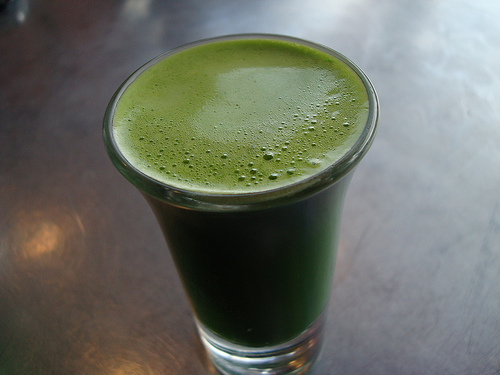







Wholesale to the Public
Your Wholesale Raw Foods & Equipment Connection
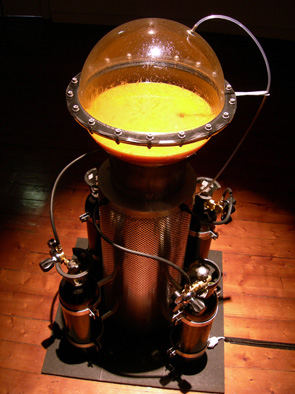
This is probably the most powerful hydraulic powered blender in the world.
So powerful it has to be bolted to the ground!!!!!
As you might be aware, I am a blender enthusiast and I have lots of experience in creating smoothies. On this page, I wil share some of the ways to create your own smoothies in your own home. I will also tell you the best way to set it up so that ingredients are available.
With the set up, you can start making green smoothies, nut milks, seed smoothies, fruit smoothies, and even almond butter, hummus, and yummy raw desserts in your blender.
1: Pick the right blender.
The main question is, do you want to use a tamper or just throw the food in the blender and let it do all the work? But, there are downsides of having it too easy. You might not want it so easy if it means the blade is pulling in so much oxygen to create the whirlpool and you get a smoothie with a bunch of foam.
Read the following to help you decide on which blender to get.

Things I blend:
Pineapple stems: These have the most enzymes of any other source. The core of the pineapple also has nearly as many enzymes as the stem. Most people throw this away also.
Apricot Kernals: Inside of each there is a very soft kernel where the phytochemicals are found.
antaloupe seeds: I make the best nut milk out of cantaloupe seeds. I also make watermellon seed milk.
Bitter Mellon: This has the highest phytochemicals out of all the vegetables.
Avocado pits: This has the most soluable fiber out of all the plant foods.
I do not blend anything seedless... such as seedless grapes or hybridized bananas. The seeds have the trace minerals that we are missing. I believe in full spectrum eating not from hybrids that are genetically damaged.
I always eat with stickers that start with a 9. Notice when you buy conventional product its starts with a 4, and sometimes a 3.
Choosing a blender:
The first thing I look for is horsepower (not peak). I find how many watts it and its amps and get the HP that way. 746 watts. I personally use a 20 amp blender because I blend very heavy foods and try to micronize everything. A good blender gives off less friction energy. A 20 amp blender compensates for any energy loss but you do need a special plug or in my case, I have an adapter. Even if I am not pulling 20 amps, the bigger motor can handle more stress and I don't have to replace by blender every few years.
I like the 20 amp blender because it not only blends quicker but doesn't oxidize my foods because it doesn't exactly whirlpool the food. It has a square container that moves the foods up the wall. It's hard to explain it without seeing it. The 20 amp blender has enough torque to go from a cold start to full speed. For heavy loads, you must have enough torque. I don't like making small batches of almond milk. I like to make about 80 ounces at a time.
Fact: Horsepower of a motor is calculated by multiplying voltage, current and efficiency, divided by 746 (a conversion constant). Because most of our kitchens have a 120 V electric circuit with a 15 A breaker, the only determinant of performance will be the efficiency of the motor.
I cannot have a blender that gets hot and over heats. When this happens, I have to wait 30 minutes for it to cool down unless I want to put the blender in the freezer. The 20 amp has a huge fan. It will blow whatever is behind the blender. Warm air jets out to keep it cool.
Since I don't want to oxidize my food, I want to blend as little of time as possible. the big blades (4 inches) gives enough wing tip speed to cut my blending time down by at least half with this blender.
I also like how it doesn't intake so much air so it doesn't oxidize my food like blenders in the past.
If you are have made raw humous or raw sprouted almond butter in the past, you will know why you need a blender that won't over heat. This blender also has thermal protectors so it won't burn out and just die on you. It will cool off and then you can use it again but I have never had to worry about this with a 20 amp. I don't use it commercially. I just use it to make a batch at a time.
There are a few drawbacks to getting a blender like this. It is loud. It is bigger than some of the smaller blenders, and it doesn't do grains as well. If you are doing mainly wet stuff and smoothies, its great but for making breads with dry grains, not so. But, then again, who makes those types of things on the raw diet. Grains are acid forming.
The blender doesn't have a speed knob. It is already programmed by chefs so you just push a button and it blends based on the button you push. I use to use a variable speed knob but this blender does not require it. The custom programmed buttons on there help so it doesn't have cavitation and form those air pockets that are so annoying. This company has finally solved that issue.

Notice how the container base is square (the new containers are 5 sided now, this is the old style)
Low density recipes have a tendency to cavitate and get to airy. The whirlpool vortex is shifted from the center to the sides. Notice the pentegonal shape cntainer). The blades are dull too. It takes more power to push a dull blade but once the dull blade hits the food, it bashes it instead of slicing it, in other words. This non whirlpool action offsets the vortex and prevents most of the oxidation. These wing tips reach over 330 mph. Most blenders on the market top off at 220+ mph. If you want your container to last a long time. ALWAYS HOLD IT DOWN WHILE YOU BLEND. This creates less friction. You don't have to do this on lower powered blender but a 20 amp... I strongly advise it.
The neat thing about the blade on the 20 amp container is the wing tip. It has a twisted edge that orients itself vertically which draws the food into the blade without bringing in so much air. The blade rotates and pushes the food along the side of the pitcher. You can see the food push upwards along the side walls. Totally different than a whirlpooling blender. The new twisted blade design gives enough "lift" so it keeps pushing the food up the side walls and prevents air pockets from forming. The vertical tip does create more drag so it can push this food up but the 20 amp gives enough power. Most blender blades are designed to decrease drag because it's only working at 120 volts and usually under 10 amps. But then again, most blenders aren't designed for this type of impact and heavy blending. This blender gets an A+ for its drag versus lift efficiency.
It doesn't matter how much horsepower our blender has if you don't have the amperage to power it.
Horsepower Scams:
1 horsepower = 745.699872 watts
How in the world can a 1500 watt blender be 3 HP?
1500 watts is not even 2 hp, not even 2+hp that
some manufacturers claim.
We have a 2400 watt, true 3.2 input horsepower blender
and we can make the claims and not lie about it.
Do the math and you will see what Phoney HP is.
or... just call me... I will be glad to tell you what is really going on.
Research on Horsepower as it pertains to blending...
Do your research on motors or call an engineer and you will see that some of the manufacturers
that make 3hp blenders sold on the market today are not truly 3hp blenders the way you might think of them as.
People believe many false beliefs just like they believe raw cashews are raw. Another example is agave nectar. It might be raw but last time I checked it came out clear out of the cactus. It does not come out brown or amber colored. Oxidation from dehydration occurs when they are trying to preserve it. So, it might be raw but it can be oxidized to the point where it doesn't matter if it is cooked or raw.
Another example is white table sugar. Only if people knew that this came from cows (bone char acts as a bleaching agent to make the sugar white; calcium from the femurs and other bones run the sugar and make it white. That is how sugar gets its white color)
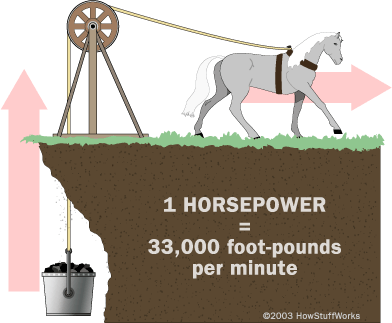
Ok, back to blending 101!
If you don't believe me you can call any motor manufacturer and they can tell you how the horsepower marketing scams are meant to
deceive customers into thinking their motors are the best.
Lambamatech is the largest motor company in the world. They recently bought GS Electric Signal Motors who makes the motors for the blender we sell
and many other blender motors on the market.
Commercial Blender Scams
It upsets me when a customer calls a manufacturer and asks to buy a commercial blender and the manufacturer won't sell them one unless they have proof of a business that it will be used in, a tax ID, a business liscense, and business references. They make it almost impossible to buy a factory made commercial blender. I know the reason for this and it is easy for figure out.
Residential blenders usually have a 3 year residential warranty and commercial blenders usually have a 3 year commercial warranty also.
The manufacturers tell me that residential blenders and their commercial blenders carry the same warranty.
The scam is this:
1 year residential warranty is not the same as a 1 year commercial. Commercial blenders are used all day long while residential blenders are used maybe a few times a day. Based on my research, a 1 year commercial warranty is usually equivalent to a 5 to 7 year residential warranty. In other words, 1 year commercial is equal to a 5 to 7 years residential. I would never try to put a residential blender with a 3 year warranty in a smoothie bar and expect it to last for 3 years. Also, residential blenders have an automatic cut off switch that shuts down the blender if it gets too hot to prevent it from burning out or causing a fire.
I believe that this cut off switch which kicks in faster on residential models than commercial models due to the absense of a high powered cooling fan prevents commercial operations from using the blender all day long ina a smoothie bar or other commercial setting. Otherwise, stores would be using the residential blenders that are cheaper and the manufactor would constantly have to replace them and lose alot of money. But, just the opposite happens when residential users buy a commercial blender. They tend to last longer than the manufacture wants them to last since they were
built extra heavy duty for commercial use in the first place. They don't want the commercial blender to last residential users 15 to 25 years. They have a 3 year warranty on them since they want you to replace it every 3 to 7 years. I believe that if the manufacturers' intentions were from the heart and focused on the needs of the end users and not the "dollar" then they would sell blenders that had more lifetime and also believe that people would pay more for a better quality blender that lasts longer and that performs better. The 20 AMP blender is made without money being a factor. It is made with the highest standard in blending technology today. It is made for the people looking for the ultimate best that technology can deliver today.
One of my customers was told that theyneeded a plunger to push the almonds into the blade and that they couldn't grind almonds into flour without water to make it whirlpool. Well, this video will prove to the store that lied to them to sell them a different blender that they were WRONG
Biggest Blender Scams Revealed
As a blender enthusiast, I am on a mission to uncover all the scams the manufactures don't want you to know about their blenders.
After becoming aware that I have been lied to about the blenders that I sell on Blindguru.com, I am choosing to no longer promote them or sell them once my stock is gone.
Lie # 1: Speed of blade.
They claim the speed is 37,000 or 45,000 or whatever they want you to believe and yes, they are good at making you believe the blender can actually go that fast. They fooled me too.
Almost everyone believes a blender can reach those speeds. Even if they are only talking about the bare motor speed and peak horsepower, they make that intentionally misleading too. It's just misleading in every way and they get you to spend your money that way.
Here is how they manipulate the facts.
Factor 1: The container
For example, 45,000 RPM blender speed is bare motor speed WITHOUT a container on it. Having a container on it slows down the peak 45,000 rpm speed almost in half.
Factor 2: Food
Then, when you put food in container it slows it down even more. The amount it slows down depends on how many amps the blender can take in.
Factor 3: AMPS
Even if its a 50 HP blender that goes a million RPM's it doesn't matter if it can't bring in the power to handle it. That's why they make 3 HP or 3.5 HP blenders with 13 amps, 15, amps, 18 amps, and 20 amps.
Factor 4: The blade
A crossblade has 2 perpendicular blades with 4 wingtips A single blade has 2 wingtips.
Having a cross blade instead of 1 blade means that twice as many blades are hitting the food therefore slowing the blade down even further. The less blades you have the faster the wingtip speed. The more blades you have on a blender the harder the motor has to work. If blending to break the cell walls of the food to the micron level I choose the single blade for the highest wing tip speed.
Factor 5: The fan
But, it gets even worse, the 45,000 or 37,000 RPM speed that they rate the motor bare motor speed at is simply that. This speed is rated WITHOUT the fan on the motor. The fan is mandatory so that the blender won't burn out or smoke within seconds of use. This is not a fair RPM measurement. Why would they test a motor without a fan and why would the consumer care what the speed of it is without a fan or the container on it. That is not practical.
Factor 6: Power supply
The power of the blender motor is tested under extreme power supply conditions (240 volts, not the 110 volts that most households have). Don't you want a motor rating based on the power supply that you will be using in your house? It doesn't matter if the motor is rated at 200,000 RPMs if you don't have the power supply to handle it.
Factor 7: Blow up speed
Here is how they get the PEAK RPM speed.
The blender that was rated 37,000 RPMs gets that rating at the explosion rate in a lab. The blender is driven to the point where at its peak bare motor speed, with no fan, no container, 240 volts, in a below freezing room in a lab, the motor blows up. They use a tachymeter to measure RPMs at the bare motor speed just before the blender explodes and sends the commutator bars shooting off the motor. If you weren't protected these commutator bars would shoot out at such a speed where it would penetrate the blender and go right through your heart.
If you want to learn more about what we have uncovered about high powered blenders please read the rest of site. If you want to see the marketing that I did based on the misinformation I was told go to my other Blender page. This website is not intended to harm the marketing of other blenders nor the sales of other stores. This is my personal diary of the information that I collect from my research on blending. I am a blending enthusiast and simply using this website as a notepad for my work. Legally, I have to say this, "My facts are based on my own research through engineers, calling up motor manufacturers, talking to manufactures of blenders, seeing lab results, and my own personal experiences. My facts are what I believe to be facts based on educated decisions I have made based on my research. What I say or my facts may or may not be 100% accurate but it is the best to my knowledge". Just in case some company wants to get mad at me for making a false claim or they don't want the public to believe an actual fact I had to type this on here for my protection.

When you know the facts it is less likely that you can be decieved.
Fact:
Most smoothie bars ask for a special blade that will pump air into a smoothie so that they can use 12.5 ounces of ingredients when serving a 16 ounce smoothie. Next time you get a smoothie, let the cup sit until all the air bubbles are gone and then claim the rest of your smoothie that you were cheated. You will notice that the 16 ounce cup that was almost over flowing will now have settled in the cup and your smoothie will be missing about a half of a cup of volume.
Fact:
High blender speed is detrimental if you have no control over it. The problems with high speed blenders is cavitation. If you food doesn't cycle through the blade it doesn't matter how power the blender is. With the new dual 4 inch wingtip design you don't need a stick to push the food down into the blade.. New blade designs have came out to replace the crossblade. The wing tip speed on the single blade goes so fast on the 20 amp blender that it would strip a blender motor if that container was put on a motor that was not designed for it.
Fact:
The wing tip speeds that were measured were based on a commercial digital tachymeter.
OXIDATION THEORY
Many companies say to use a stick to force the food into the blade. This is what they say to make other companies look bad that tell you to
add water to the smoothies. The other blenders can blend foods that you normally couldn't blend in a different blender due to the stick pushing the food into the blade. They don't mention the fact of oxidation and heat causes by lack of water coating the food at such high blending speeds.
We prefer to use water as an aqueous solution so the food is not allowed to oxidized. Water acts as a buffer that coates the food while it is blending.
This is similar to putting fluids into your car so your car doesn't overheat. If we ran our car without oil we would see what happens.

Many smoothie bars often call us for special blades that will whip more oxgyen into smoothies
so they can serve less ingredients and just fill it up with a lot of air.
TEST: We blended an apple in a blender requiring a stick so it won't cavitate with no water and then blend another apple in that same blender blender but this time we added just enough water to blend the apple without a stick. We sat both smoothies on a table at room tempurature and we will let you guess which apple smoothie turned brown and oxidized the quickest..
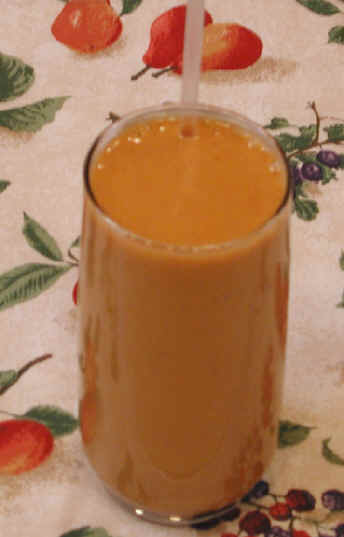
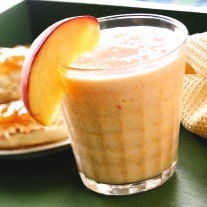
How much has your smoothie oxidized. Next time think twice before blending it without water.
With the new 4 inch wing blade and larger based container we have no use for the older style containers with the stick to prevent cavitation.
AMP Theory:
Blender vary in power depending on the main factor, the amperage.
To get a 4 inch wing blade we need at least an 18 amp. We cannot drive a 4 inch blade in a blender that is under 18 amps and have it comply to the safety standards of UL listings and NSF approval. The 20 amp Micronizer Blender requires a heavier guage cord and wiring to handle the bigger electrical loads.
The way I was told about 3hp blenders is that it is not just about having a 3hp or 3.5 hp blender and you have a good blender. There are other factors involved and there are different varieties of 3hp and 3.5 hp blenders for different uses.
I was told it's like this:
10-12 amps - Toyota (Camry)
12-13 amps (1,500 WATTS) - BMW 3 series
15 amps (1,800 WATTS)- Porsche, Mercedes 600SL, BMW 7 series
18 amps (2,000 WATTS)- Lamborghinni, Ferarri
20 amps (2,400 WATTS) - Lamborghinni, Ferarri with the torque of a Hummer (It can go as fast as a race car but the offroad or towing capacity of a Hummer)
If this blender were suddenly turned into a car it would probably look something like this

The 20 amp Micronizer Blender has a 4 inch wing tip that reaches speeds over 330 MPH, almost double the wingtip strength of the other blades that have a lower powered engine.
A 3 inch blade in a 3+ HP, 20 amp blender will reach a peak tip speed of 260 MPH.
A 2HP motor can drive its blade at nowhere near 333 MPH maxing out at 217 mph.
Wingtips at speeds of 333 MPH will pulverize almost anything it comes in contact with.
As a reference point, the level 10 setting on the 2hp or 3hp blenders under 13 amps is like the low setting on the
20 AMP Micronizer Blender.
Sure, many people will get a 3.5 hp blender with 13 amps but it has a 2 1/2 inch blade.
This blender cannot power a 4 inch blade at the 330 mph and over wingtip speeds.
No other blender in the world has 20 AMPS.
If you have used a 3HP 13 AMP blender, you can imagine what a 20 AMP can do.
The 20 AMP blender is not by HP. The company that builds these doesn't go by pHP (phony horsepower).
They don't measure the HP by taking off the fan and running it to the explosion point of the motor.
I've learned that most of the 3HP and 3.5 HP ratings are not based on "real world" blending.
The blenders in this league are not rated by Horsepower. We sell commercial 2 HP food processors that cost around $4,000...and it weighs almost 50 lbs.
The more AMPs that a blender can pull in the faster it can spin the blade and maintain that speed. If you had a 20HP blender and it only draws in 13 amps it would only be as powerful as the amperage it takes in.
Imagine the 20 AMP motor like a Lamborghinni/Hummer. If you aren't putting in good fuel then no matter how powerful the car is it will only run as good as the gasoline you put in it. Try running a high performance car on regular gasoline. Then try Plus grade. Then try Premium. You will see the difference. Even though the car is the same, the fuel sources affect the power that the car can handle. The gas to a car is like amperage to a blender.
Motor Theory:
A Watt has 2 parts, Volts and Amps. Individually, they do not express power. When you say 12.5 Amps, you are merely assuming typical U.S. household voltage, which is anywhere between 110V and 120V. Volts x Amps = Watts. Electrical power is that simple. Just do the math, and you can compare apples to apples. The 3+hp blender is more noticeably powerful than the 3 peak hp. While there may be mechanical differences affecting the efficiency of converting electrical power into mechanical power, the wattage is the starting point.
Every electromagnetic device works more efficiently when cold. This is because hot wires have more resistance. Since resistive power losses are a function of current squared, more power is lost to heat in a hot wire. Motor efficiency and longevity improve with better cooling.
Quieter bearings mean that less energy is spent making noise, from friction which produces heat, and from lateral force. On a computer hard drive, this can be appreciable.
Drag is a function of mechanical resistance, not electromagnetic force (apart from inductive reverse EMF, which is not at issue here). A direct drive motor system will have less drag than a geared system. A long drive shaft will have more dynamic energy loss due to torsion tension (acts like a spring), than a short drive shaft, making the 3+ HP blender better than the less powerful blenders.
Most high powered blenders that we have owned have burned out
within a few years after the warranty period.
Now, finally, a blender has a closed loop system.
Before we relied on a thermostat to shut off the blender when it got too hot to avoid burning out the motor or that "smoke smell" that we get when we overwork the motor.
A closed loop system senses not only the tempurature but overload signals also.
The old style blenders simply turned off when it got too hot. This blender does safety checks
several times a second so it can monitor what you are blending based on what we are blending.
If we put a hammer handle in the blender in the old style blenders, the motor will start drawing in so many amps to cut through the hammer until finally the motor gets so hot that the machine turns off automatically. With the custom buttons on the new blender, the blender knows what you are blending and knows how many amps to draw.
If the hammer is stuck in the 20 AMP blender, it will sense that something is in the way and the motor will automatically stop before it gets overheated. This works just the opposite of the open loop blenders.
It's kind of like playing pinball when a ball gets stuck and the pinball machine starts moving all of its parts to find out where the ball is to push it out.
The lifetime of a blender is dependant on how hot it gets.
When we used a 13 AMP 3HP blender to do almond milk and then we do the same amount of almond milk in a 20 AMP blender, the 20 AMP blender doesn't hav to work has hard as the smaller motor.
The bigger the engine the less wear and tear on the motor each time you use it.
Also, to increase the lifetime on the containers, we want the least amount of harborage points.
The 20 AMP blender has the least amount of these points than any other blender. A harborage point are places like cracks in the blender or container that food can get in that cloggs it up, such as food getting in that crack where the blade spins. The 20 AMP blender is so easy to clean that you don't even need the red container brush. There are no harboring points in the 20 AMP container.
Almost everyone wants to know why such a powerful blender is needed.
We have taken an ORP meter and tested the electrical charge of a smoothie after it is blended.
The "life" or value of a smoothie is directly related to how long it is blended for and at what speed.
Some of the questions we receive from other blending enthusiasts
"If I blend for 2 minutes at a medium speed or I blend at the high speed of the 20 AMP Micronizer Blender for 15 seconds, which has the lowest ORP?"
"How do the cycles or using a dial play a part in oxidation of the nutrients or heating of a smoothie?"
"Should I chill my ingredients before I blend or does it matter?
"To get a desired ORP, is it better to blend a 48 ounce smoothie at once or blend twice and do 24 ounces at a time?"
Before buying a blender, know the following:
What are you planning to blend? (thick almond butter, green smoothies, grains into flour, or just fruits)
Know how much food you are doing at once (some blenders have a short window of time before it overheats)
Do you want to blend longer in intervals or blend quicker using colder food? You don't want to heat your food.
Do you need dial or control settings or do you just want to throw it all on and turn it on high?
Do you care if the blender is very loud. You can wear earmuffs but your neighbors below might complain. One person said
they kicked him out due to noise compliance issues. He even got a sound proof cover but the floor vibrated neighbors complained.
Know which blender keeps the lowest ORP or keeps the food the most alive after blending.
3 horsepower, better micronization and extraction of phytonutrients
one 64 oz container with markings for up to 32oz
Improved J2 container with bearing assembly and conical shaped base for improved blending and easier cleanup
Unique wing tip heavy duty 3 inch blade design improves blending and allows for simplified cleanup
Compact deign allows for storage of blender and container on the counter-top under almost all cabinets
ICB7 key pad interface
Store favorite programs on the 4 key pads or select the other 21 programs from the easy to use interface
25 pre set programs designed for optimum blending for what ever your needs are including a pulse option
FACTS ABOUT High POWERED BLENDERS:
If one does not digest and assimilate properly the body will not benefit from a healthier diet.
The ICB7 is the best method for getting the Phytochemical and Antioxidants out of fruits and vegetables.
Your body cannot digest all the phytochemicals if they are still locked inside the cell structure of your food. An apple has almost 400 different phytochemicals, but you only utilize them when they are broken out
of the cell walls with a high speed high power blender....say hello to the awesome power of ICB7 by Blendtec.
The 20 AMP 3.5 HP blender is powerful, it is 3 Plus powerful!
The power and speed of ICB7 gets the job done quicker resulting in minimal heat to vital nutrients during blending. The less time you spend blending, the colder and fresher the food stays. You can try any 3hp blender but you will have to blend longer and can heat the nutrients.
ICB7 will blend uniformly without cavitation or creating a vortex that would oxidize the food during blending.
With ICB7, you'll never have to use a stick to push the food into the blade. Uniform blending occurs and all the food goes through the cycles meant for that smoothie. Manually pushing the food into the blade causes food that was blended to get over blended and heated until you push the next batch in.
With its 20 AMP 3.5 HP motor and its 4 inch blade, the ICB7 gives the finest grind of all.
The finer the grind of the seeds and pulp the more your body can utilize its nutrients.
The more HP, the more pressing and grinding power that goes into your food to release the nutrients locked in the cell walls. The ICB7 can blend at least three cups of soaked sunflower seeds without adding liquid. If you put blended blueberry or raspberry seeds in a cheap low powered blender and then blended the same in our 20 AMP ICB7 blender you can see how it crushes the seeds. Give your body all the nutrients of the fruit by unlocking the benefits in the seeds: that's blending at the cellular level.
ICB7 is amazingly durable and easily maintains power up to its 3.5 HP peak.
The heavier the gauge wiring, the less it will get hot which extends the blender's life. Its huge cooling fan prevents overheating while you make heavy foods like almond butter or raw hummus. Its thermally protected motor prevents burnout and makes the ICB7 remarkably quiet despite its 4 inch blade and awesome power.
It has a life expectancy of 10 to 15 years.
A WORD ON WIRING
What makes the 3+HP blender last longer and have more power than the 3hp blender? Wirings...Lets talk about windings! This is where the power comes from and the durability. The more windings in a motor the more powerful the motor will be. Cheap windings (the thousands of wires that are used with a magnant to power the blade) might produce the same power but will get hot quicker and will result in the automatic cutoff switch to come on. Cheap windings might produce almost the power that a 3HP+ blender will produce but the motor has to work harder and the windings will burn out quicker resulting in a blender that will not last many years. The better quality the material in the windings the longer it will last. Over time, each time you turn on the blender it puts strain on the windings especially when you turn it on full power from a cold start. This is the number one reason why one person's blender would last 3 years and you hear stories of some people with that same blender that have it for 10 to 20 years. Some people even go to the extent of keeping their blender in the fridgerator to keep it cool which actually keeps it cooler and makes the blender last longer but many will find that when its cold it attracts humidity which can dampen the motor and destroy the blender. Some people have told me that they have kept their blender outside in a sealed bag or container to extend its life. The 3+HP blender has a huge coolilng fan built in it. If you have some papers nearby the blender...you will see them fly off the counter. The fan is that powerful. That is another difference between the 3hp and 3HP+ blender. The 3hp blender maxes out at 3hp. The 3+HP blender maxes out between 3 and 4 HP.
A Word on Warranties
Want a blender to last longer than just the 3 year warranty period?
Surface breakdown of a gear greatly reducing the fatigue properties of the gear.
Commercial blenders have better gears than residential blenders. This is why restaruants can use them all day long without them overheating and burning out like residential. On a microscopic level you can see the difference between residential grade and commercial grade gears. This is why we DO NOT use residential grade blenders. Taking apart a blender and "turning it into a Ferrari" does void the warranty but who cares, the blender should outlast the factory parts and perform better. Our 3.5 HP blender has the best gears that we have found in any blender.
Batting vs Splitting (comparing 3 and 3.5 horsepowers)
If you are blending with a 3hp blender at its peak, once all the food is blended to the smallest particle size that the blender can blend, if you keep blending the food after the smallest particle size the food will get in that blender, the only thing will happen is the food gets batted instead of splitting. For example, if you blend our rasberry seeds in a low powered blender, it can split the seeds to a certain point and after that, no matter how long you keep the seeds in that low powered blender, it will not split them anymore but just act like a baseball bat and just move the seeds around. In slow motion you would just see the seeds sliding off the blades, not splitting. If you put the blended seeds from that blender into a 3hp blender then it will split the seeds even more until it gets to a certain point and then it will bat the seeds too. Then, put the seed powder into a 3 1/2 HP blender and you will see that it can further split the powder on a micron level which is not visable to the eye but to the cellular level. A 3 1/2 HP blender will blend the seeds to the point where I can fully digest all of it. Once a blender blends to the smallest particle size it can blend...any blending over that just reduces ORP. That is why it is good to get the most powerful blender you can afford because reducing the particle size and ORP happen at the same time. Blending longer does affect ORP significantly.
A 3 1/2 HP can blend to the same consistancy that a 2HP blender can do in less time therefore having a better ORP level. If you are going to blend apples, for example, it might take 7 seconds of whirlpooling in a 3HP blender and 25 seconds in a 1 or 2 HP blender to get the same consistancy. If blending apples, which don't require much torque to blend, the apples blended for less time in the 3hp or 3 1/2 HP blender will have a more desirable ORP than the apples blended in the less powerful blender. Take an ORP meter and you will see this result for yourself.
Oxygen Reduction Potential (ORP)
Energy is what you get from nutrients. Fresh blended strawberrys have more energy than blended frozen strawberries. Cooked strawberries or old strawberries can have less energy than even frozen.
In considering the physiological aspects of food digestion, we must consider two factors: the ease and efficiency of digestion. Ease of digestion refers to the ease with which the body handles a given food. Efficiency of digestion means how well the body system obtains its needs from a given food relative to the energy it must expend to obtain its needs. For example, the body might easily processes a smoothie in low powered blender but does not efficiently make use of its nutritive content. Another reason to buy a 3+HP blender.
Nutritional Factors
The nutrient complement of the food is rated according to how well it furnishes our needs, not according only to its amount of nutrients. Protein Adequacy. Protein sufficiency is not determined only by what the food contains. Rather it is determined by the ability of the body to digest and make use of the food's protein complement relative to our needs. Vitamin adequacy of a given food is determined by our body's ability to assimilate its needs from that food.
A 3hp or 3+hp blender will not spike your blood sugar like a juicer does since you are getting the complete nutrition from the juice and the cell wall structure of the fiber.
A blended liquid diet is much easier on my body than eating harder to digest food such as raw nuts and grains. Solid foods produce more wastes products also. A blended diet gives me little to no gas so I don't have the pressure on my arteries from bloating that I would normally get from undigested foods. My body digests almost all the foods that I blend. The 3 to 5 lbs of aerobic bacteria has also tweaked my body to its natural potential.
Take the blender questionaire then submit your answers to us.
A. Purpose
I am blending to make (check off all that apply)
smoothies
blended grains
green drinks
thick, heavy foods such as raw almond butter or raw hummus
other
B. Usage
I will blend for brief intervals of time, just for my personal use.
I am blending for brief intervals of time spread, but consistently, such as at smoothie bar or restaurant.
I am blending for long, continuous intervals of time. I may need a blender with a strong cooling fan so it doesn't quit after 2 minutes of continuous heavy usage due to overheating.
C. Time
I want to just blend to my perfection even if it takes longer to blend . Under 2hp is fine with me.
I want to blend and get the job done fast so I won't overheat the food.
I want a 3 or more horsepower blender as I need extra power to blend heavier foods. I even will use the "special blender cup" that will even enhance the torsion.
D. Oxidation
I am consuming what I blended immediately, therefore oxidation is not a factor.
I know a high speed blender will put tiny air bubbles in the juice or food and it will oxidize just like and apple turns brown after being exposed to air over time. But, I can buy a pump around $25 to suck out all the air of the container so I can store it longer.
HUH? I will call a raw food volunteer who can explain what you mean by oxidation and how I should never buy a high speed blender without a pump.
E. Speed Settings
I just need a high/low switch.
I need an adjustable speed setting so I can get the exact speed. I care about the exact texture of the blended foods.
Why does it matter as long as it all gets blended? I will call a volunteer and ask which version would be better for me.
F. Noise
I need a blender that is quite. I do not want to wake up the kids or neighbors.
Noise doesn't matter.
G. Blender Vs. Juicer
I need a blender. I rather have a blender because I don't want to drink juice.
I want a blender because I need to eat the fiber/pulp and think it is a wasteful to throw it out.
I am clever. I will use the blender as a juicer too. I will blend up fruits and veggies and place it in the "Just Squeeze me" bag and I will manually squeeze the juice out without having to pay for a juicer.
H. ORP
I don't care about the ORP level of my smoothie.
I want making smoothies to be as simple and easy as possible.
I want an alarm to go off that will tell me how long to blend my smoothie to my desired ORP level.
I would like to learn more about ORP and why it is important.
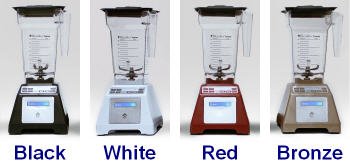
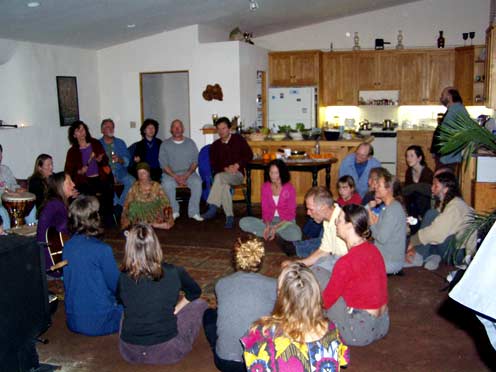
We have people calling in all the time and telling us that their low powered blender will blend seeds with no problem, but you cannot tell the difference by taste or texture, or at least until they compare it with a 3+hp blender. A 3+HP blenders break down the cellular structure.... your digestive system will know the difference and you will get more benefits from your food in a 3+hp vs. a low powered blender. The difference between a cheaper low powered blender and a 3+HP blender is the ability to break down the cellular walls of the food. If you blend avocado pits or blueberries you will notice that the blended seeds are grainy in the low powered blender. In the 3+hp blender it blends it almost to the point where you don't notice anything grainy. It is very hard to drink a strawberry, blueberry, rasberry phytochemical smoothie when you have to chew the seeds or they get cought in your throat. That would turn anyone off from using their blender to make these types of smoothies . When you buy a 3+HP blender from us, we can teach you information on the raw foods diet that is not found in raw food books, others websites or from other nutrition consultants.
We will give you recipes that only a 3+HP blender can do and will show you how to make your own smoothies and make them taste good...even with non sweet vegetables, while still maintaining proper food combinations.
If you plan on making raw hummus, raw almond butter, raw cashew cheese, raw fudge, or any foods that you don't plan on adding water or lots of oil to you will see the magic of a 3.5 hp blender.
When we talk about 3HP or 3+HP we are referring to the peak horsepower. Both blenders peak at 3HP or 3+HP but when you blend, the constant HP is what we are concerned with. If one blender maxes out at 3HP but only delivers under 3HP when its blending heavy foods that might not be good. But, if a blender has 3HP and has a larger engine that can maintain a near constant 3HP or 3+HP even when blending heavy foods then that is what makes one better than another. If you are just doing smoothies the 3hp will be fine. For those that are doing the green smoothies that buy the 3hp blender I have had no complaints. I only get complaints when they try to do things in a blender that only a food proccessor can do well.
In the 3+HP blender it maintains a constant 3HP to 3+HP even when blending thick foods like almond butter or avocado pits. It is like a food processor in one.
ALL BLENDERS NOT CREATED EQUAL
The variable speed control knob on the new 3+HP blender gives you infinite control during the chopping stage of creating the ultimate blended drink.
Since the primary objective is to minimize the high speed run time by quickly getting the whirlpool, it is necessary to first achieve a somewhat homogeneous mixture before moving to the final blending stage.
By using short 2-3 second low speed chopping sessions, you are able to get a full pitcher of coarsely hand chopped fruits, nuts, vegetables and seeds sufficiently mixed for the high speed blending stage.
Between each of these short slow speed runs you can use the accelerator tool to push the coarse foods down close to the blades so they can me mixed. You can add food between these runs as more room becomes available.
You need to add just enough water to any blended drink to enable the whirlpool to develop quickly. The water is usually the first ingredient into the pitcher so experience will teach you how much to use based on the amount and water content of the foods you are going to blend.
If these preliminary steps have been successfully achieved, you will be able to smoothly run the variable control to the highest setting and with a little help from the accelerator tool get the whirlpool going. You can then immediately switch to high speed and in about 5-10 seconds have a consistency that will be easily pulled through a straw.
This is the advantage of the variable speed control knob found on the 3+HP heavy duty commercial blender.
Email from a customer:
"I spoke both to my Mechanical Engineers and Electrical Engineers at work concerning the comparison betwee your blenders. As you may remember, we talked last week. I am a Chemical Engineer with both a Bachelors and Masters Degree.
Since you tell me that the 3+ hp blender does a better job of blending for the same "geometry" of mixer, it reduces down to the fact that the 3+ hp motor is more precisely and efficiently designed. It has better bearings and sound insulation that accounts for the much quieter operation and performance. It has more & heavier windings and designed with closer tolerances which accounts for more power especially when cold starting it. This is why there is less drag when you turn it on. It appears to have a better cooling system which leads to more efficient operation and longer life.
The bottom line is that for the close shaft and blade design, the better the motor design (including bearings and windings) and cooling system, the better the mixing and the longer the life expectancy. The motor is the heart of the blender. The healthier the motor, the healthier the blender. The 3+ hp blender is the better blender for blending heavy foods and for long durations. The 3 hp blender will do just about as good as a job as the 3+ hp blender when doing fruit and vegetable smoothies.
Thank you for giving me the opportunity to test each of your blenders out. I will call you this evening.
Another email from an electrical engineer:
"I am glad to help people understand objective scientific reality. It is unfortunate that medical sciences are not as developed as the sciences of electricity and mechanics. But I have faith that the benefits of raw food will become well established. Right now I do not have time to write a "polished" article but I will do my best!Now for your question -- electrical power is measured in wattage. A Watt has 2 parts, Volts and Amps. Individually, they do not express power. When you say 12.5 Amps, you are merely assuming typical U.S. household voltage, which is anywhere between 110V and 120V. Volts x Amps = Watts. Electrical power is that simple. Just do the math, and you can compare apples to apples. The 3+hp blender is more noticeably powerful than the 3 peak horsepower pro model. While there may be mechanical differences affecting the efficiency of converting electrical power into mechanical power, the wattage is the starting point. I am an electronics and mechanical engineer. I also appreciate what you communicate to be your real and personal experience from direct observation."
1. Every electromagnetic device works more efficiently when cold. This is because hot wires have more resistance. Since resistive power losses are a function of current squared, more power is lost to heat in a hot wire. Motor efficiency and longevity improve with better cooling
2. Quieter bearings mean that less energy is spent making noise, from friction which produces heat, and from lateral force. On a computer hard drive, this can be appreciable.
3. Drag is a function of mechanical resistance, not electromagnetic force (apart from inductive reverse EMF, which is not at issue here). A direct drive motor system will have less drag than a geared system. A long drive shaft will have more dynamic energy loss due to torsion tension (acts like a spring), than a short drive shaft, making the 20 AMP blender better than the 3 HP Waring R model.
Q&A:
Can I make hot soup in my blender?
Yes, if you are willing to run the blender for 3-4 minutes to allow the friction inside the jar to create heat. Not the most efficient use of energy. A better method is to add boiling water to the jar, blend, then serve or blend. This will oxidize all the nutritients unless you pump the air out immediatly with the pump we sell.
Can I grind seeds such as flax seeds, or nuts to make nut butter?
Yes, the 3hp blender will grind seeds and nuts into powder. You may want to add additional oil to the powder to get a buttery consistency if you don't have a tamper. In the 3+HP blender you don't need to add oil so it will blend. That is what the tamper is used for. (Who wants to add oil to their nut butters? That's the downside of the the a blender without a tamper.)
Can the the 3hp blender make flour from dry grains?
You can grind the hardest of whole wheat into a fine flour in under 50 seconds. It will also grind to a cracked flour consistency or stone ground flour consistency. They say this.. But, we feel grains are acid forming and are not good to eat. Buy a decidated grain meal for this. It is grainy like and does not make the "fine flour" you think it will make like a grain meal. That is why grain meals are made.
Why does one 3hp blender last longer than another 3hp blender?
It all has to do with heat. Super conduction type medal can handle more power with less heat & resistance.
The cooler a blender stays (the ones that have built in fans) the longer it lasts. Different coatings variances can change the magnetic field which also has to do with heat. The more expensive 3hp blender have harder alloy steal and thicker gauge wires ( coils on motor). The heavier the gauge the less heat build up.
Why do some 3.5 hp blenders blend better than other 3hp blenders?
Horsepower is a matter of speed. But speed without power is not enough. That's where the Amperage comes in with a 20 AMP blender: the potential speed is fully realized and the blender is efficient and is NEVER overheats. Also, precision bearings and gears make the blender more efficient. the more efficient the better it can transfer power. You might get the same power out of a cheaper 3hp blender in the short term but in the long term it might age, just like a new car runs better than an old one.
What are the advantages of not having a tamper with a bigger jar?
The food is less likely to captivate. A cross blade (4 blades) means that less food will get into the front of blade and less whirlpool rotations. The more it whirlpools the more oxygen you get in the food but the less cavitation. A bigger container base = less cavitation. Air pockets are the last thing we want when we blend. Two blades with a larger container are good for those that don't want to use a tamper but by using the tamper we have to do some manual work but we get a better blend and the food doesn't oxidize. A square jar is more aggressive when using a single blade and not a cross blade because it can spin faster creating a stronger whirlpool that makes a tamper almost unnecessary unless you are doing things like almond butter or very thick foods.
I have a residential 3hp blender and a 2hp blender. Why don't I notice anything different?
Well, we don't sell residential 3hp blenders. We only carry the commercial blenders and we discount them to make them affordable. Your 3hp blender probably has a large fan which cools blender. I have learned that for residential blenders it takes away from the horsepower that goes into the food. A 3hp blender can handle thicker loads and usually won't overheat like a 2hp blender. The real power comes in when you have a 3+hp blender with more amperage and revolutions per minute than the residential versions. The extra heavy duty fan is overkill and you will rarely, if ever, utilize a large cooling fan for home use. It would be like having a commerical coffee maker when all you need is just one cup.
If you are blending to break open the cell walls and want the most power then I recommend a commercial grade 3+HP blender.
To receive a high rating a product must have the following characteristics:
Easy to Use (doesn't take too much time to use, not to complicated)
Power (Blender can handle loads under stress, peak hp vs constant hp)
Quality Materials (good wirings throughout, metals or plastics)
Quality Components (good motor, well constructed mechanical mechanisms, heavy duty)
Seeded Grape Blending Test:
1HP or less: Very grainy, not smooth, fragments of grape skins still intact, pieces of whole grape, many seeds still intact
2HP to 2+HP: Slighty grainy, tiny fragments of grape skins, no pieces of whole grape, semi-smooth. Still a need to chew seeds. We did turn the blender off to avoid the grapes from getting so hot that it started steaming.
3HP Peak: Grainyness is still there but hardly noticable, not all phytochemicals unlocked, still need to chew a few seeds
3+HP: No grainyness, seeds blended to almost powderlike consistancy, almost all phytochemicals unlocked from cell walls, blends in shorter time to avoid overheating
3 1/2: At this level, the torque and speed is so strong that there is no need for a tamper when making smoothies. The same results as in a 3+HP blender but with reduced oxidation and heating due to a quicker blend time. The less time you blend the better the ORP reading.
Damage Done to Food by Blending: OXIDATION
Now to address the action of blending foods in a blender. Blending is a rather violent action that whips millions of tiny air (containing oxygen) bubbles into the substance, while also, at the same time destroying any integrity of the whole which protected the contents (the eggshell is gone, the fruit skin is removed, etc.), from the air (and oxygen). Those little air bubbles have lots of surface area, exposing lots of good nutrients in the blended mix to lots of oxygen FAST. So oxidation is vastly accelerated. The presence of oils from nuts, of fruits, or of honey, to some extent protects the oxidation-prone nutrients from oxidation. Raw olive oil helps as well, because it contains mostly monosat fats which can coat the small particles and globules of cholesterol, protecting them, and it also contains lots of neat antioxidants, which will slow the oxidative processes. To blender a smoothie and have it sit for more than 2 hours before drinking, some add a hydrogen booster to protect it from oxidative destruction by ROS (Reactive Oxygen Species), or use an anti-air pump. We have lab instruments which can measure the degree or amount of oxidation (damage) versus reduction (antioxidant activity, and usually good unless it is extremely excessive) in foods and substances.
Tips to Minimize Oxidation:
- fill the blender more fully as it causes less bubbling and oxidation to occur.
- blend for as short a time as necessary. The more powerful the blender, the less time you need to blend
- using ice or very cold water will help minimize oxidation (at the expense of consuming a food that is not at optimal digestive temperature).
- adding high-antioxidant foods such as pollen, blueberries and other berries will help to minimize oxidation.
- dont put blended foods in the fridge, just blend and start consuming immediately unless you pump the air out with the anti-air pump.
I READ ON THE INTERNET TO AVOID BLUEBERRIES STRAWBERRIES, ETC?!?!?!
Foods to avoid blending in a low powered blender:
You should avoid any foods that will not fully blend in a low powered blender,
including strawberries, blueberries, raspberries, blackberries, boysenberries,
whole cranberries or foods with small seeds (particulate). The small seeds could
lodge in a diverticuli (intestine pocket) and cause you discomfort.
Diverticulosis is a disease where pockets form in the large intestine.
When food gets caught in these pockets, they become irritated and inflamed. These
abnormal pockets usually form because of a diet that is too low in fiber.
A high powered blender will blend these seeds to the micron level.

All information on this blender page and the videos are for fun and enjoyment. Just like the message board page, this is an extenstion of our journal and everday experience in our symbiotic lifestyle. This is like a diary. The opinions in the videos and on this site are just personal opinions. The wording or text or information doesn't represent the manufacturers or distributors or any store. We don't think we are right or wrong. It is just based on what we have learned from experience as a blender enthusiast. Some of the information might change as we learn more things about blending. Our staff lets us know when they find more information and we post it on the website if it follows the symbiotic lifestyle or we enjoy it. We are not professionals. We just do the videos for fun and there may be flaws as they are made for us to share. Please don't judge what we do in our videos. They are not meant to be professional in anyway and are often not planned or rehearsed.
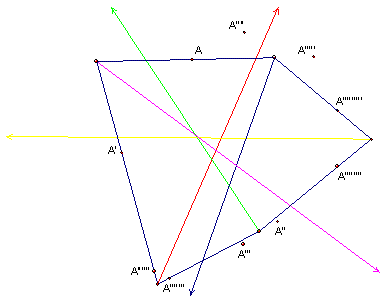
The container for the 20 amp Micronizer Blender is an irregularly shaped pentegon.
The consistancy of the food is only as good as the container. If you have the best motor in the world and it causes
the food in your container to cavitate then you are going to have a problem. Control is the most important factor of
making a great smoothie.
See video Clip here of cavitation of rasberry flour.
Choosing a container:
Round VS. Angular Containers
What are the differences?
The difference that the container shape causes is the way it blends. Both types can do a good job and blend what you need but it is the
way you blend that matters. A cheap car can get you from point A to point B but when you need 4 wheel drive for going off roading or extra power
for taking off quicker or better breaks for the rain then that is when different qualities matter.
Earthquake VS. Tornado.
Which way do you want to blend?
The 20 AMP Micronizer Blender holds nearly 100 ounces which is significantly larger than the 64 ounce conatiners. Compainies that make the 64 oz. container don't recommend filling the container up to the top since it neads room for a whirlpool or vortex effect. This blender container works totally different.
It is pentegonal shaped and the way it blends resembles an earthquake as the container is not roundlike like the previous generation models.
You don't even need a stick to make the food blend in this blender. The container is designed for little to no cavitation.
The 5 sided container creates a lesser whirlpooling effect that pulls the food into the blade in near the middle of the blade while the 2 wingtips crush
the food to the micron particle level. I do warn our blender ethusiasts that this is so powerful that you do not always need to blend at its top speeds.
This container will blend everything from grains (no need for a seperate dry goods container),
ice (no need to buy a seperate ice blade), to smoothies and will make uniform desired consistencies.
For those that are time sensitive and don't have a time to spend manually controlling the blender
container with a stick then this container is probably the one you will enjoy using.
Plus, if you own a restaurant or smoothie bar this is new container design is completely sealed when
it blends and there is no need for a stick which in which the smoothie splashes out of the container and it takes time for you
to clean it up. Plus, every time you put the stick down there is usually food on it that is often washed away due to time management.
When you have 4 customers waiting in line you don't have time clean each stick. Years ago, I have seen smoothie bars just wash out the
container and stick. It's just a waste. Now, the containers are larger and more seems to pour out of it as the smoothie is shaken
out of the angular design. Every minute that is wasted in time making a smoothie adds up over the years. So does the ingredients that
are thrown away due to a smaller container size that takes more time for us to clean out.
This container has the lowest cavitation rating of all blenders we have tested. Cavitation happens when a an air pocket forms the
immediate area surrounding the blade.Nothing blends but air when all the food is pushed off to the side or above the blade due to a lack of
control. This new container design eliminates the need for a stick to reduce caviation when doing the smoothies we do.

The way the container works more like an earthquake rather than a tornado is that the blade causes a gravitational force that puts a downward pressure on the food ingredients in the containers sides, just the opposite of whirlpool effect where it creates a vortex in the middle where the food falls into.
The geometrical shape of the container (pentegonal) shifts what would normally be a fluid flowing vortex in the center of the container which, if uncontrolled, or if the ingredients are "low dense" and "caviation prone" would cause the air pocket that we want to avoid. The goal of this container is to shift this vortex to the walls of the container which is the latest invention in containers. It takes excessive rpm speeds to shift this vortex off the normal axis of rotation, which is the center of the blender container. Finally, a container has been developed that reduces the cavitation that the old style blenders had problems with.
Wing Tip Speed Example:

Imagine the right side of these people skating in one direction and the other side of people skating the opposite direction.
The person holding hands just next to the center person would be going at 2 MPH, the person that is 3rd from the center
would be going around 6 MPH. The 4th person would be going around 10 MPH. The 5th person would then be going over 10 MPH to the point where
they couldn't hold on any longer. This is what the wing tip speed is all about. To make a good blender container, the longer the wingspan is the more the motor has to power the blade and the harder it is to increase wingtip speed. That is why when there is no container on the blender there are no wings to move and it goes very fast. If we put a 3 inch blade on our 20 AMP Accelerator Blender the wing tips would not reach 366 MPH as it does on the 4 inch wing tip blade.
A lot of people don't understand the wing tip theory no matter how much I try to explain it. I am on the phone with people giving examples and
sometimes they need a few more examples and I have no problem explaining it. I actually get a smile on my face when they finally get it and feel
proud of myself. If you watch my videos I know I might not explain things so good sometimes but I try my best!
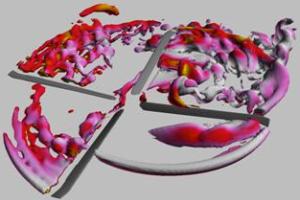
Imagine a helicopter blade...
Although the same part of blade nearest the center of the blade where all the blades connect are going at the
same speed as the wingtips, the wingtips cover more surface area which cause more friction. Theoretically,
the wingtip is going at the same speed as the part of the blade that is closer to the center.
In a closed vaccuum these results would be different but the speed is relative to the static matter it comes in contact with
and that what creates the force that goes into your food when you blend, for example.
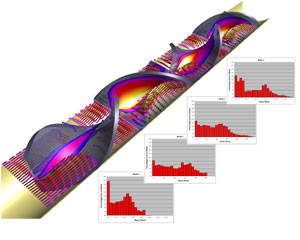
The picture to the right is a simulation of the wings on a blender.
Shown are the four mixing blades inside a static mixer, with the shear stress contoured on each. The coordinate plane shows velocity vectors, colored by speed or velocity magnitude. In the histogram created for each blade, the vertical axis shows the percentage area that is covered for a particular range of shear stress. For blade 1, for instance, most of the area (about 18%) is at the l west shear plotted. As you go from blade 1 to blade 4, the maximum shear increases — which is counter-intuitive. For many static mixers, there is often a critical shear stress beyond which the final emulsion can become ruined. Such analysis lets the designer know exactly where a critical shear may be reached and offers guidance for fixing the problem.
The new blade design blades also create a similar effect as when race cars follow each other.
Question:
What are the advantages of not having a tamper with a bigger jar?
Answer:
The food is less likely to captivate. A cross blade (4 blades) means that less food will get into the front of blade and less whirlpool rotations. The more it whirlpools the more oxygen you get in the food but the less cavitation. A bigger container base = less cavitation. Air pockets are the last thing we want when we blend. Two blades with a larger container are good for those that don't want to use a tamper but by using the tamper we have to do some manual work but we get a better blend and the food doesn't oxidize. A square jar is more aggressive when using a single blade and not a cross blade because it can spin faster creating a stronger whirlpool that makes a tamper almost unnecessary unless you are doing things like almond butter or very thick foods.
CONTAINERTIP:
How to add years to the life of the container on 3hp and 3HP+ blenders:
We do know trick that will prevent you from having to change the containers every year but its a hassle to do. When the blades are spinning near the 3hp power the container will try to spin too. This creates friction that will prematurely age the container. The trick is to hold the container down with your hand while you are blending. Put as much pressure as you need to hold the container down. Aside from that, we keep all of our containers in the freezer just before blending.